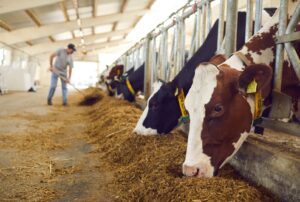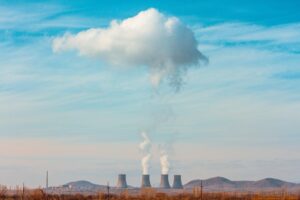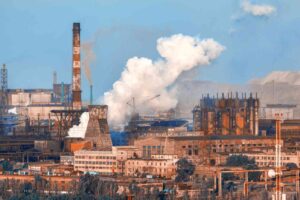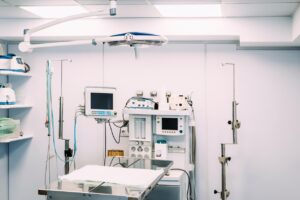With the continuous advancement of technology, the Internet of Things (IoT) has become an indispensable part of our lives. It has achieved great success in many fields, one of which is its application in the development of gas analyzers. A gas analyzer is an instrument used to measure and monitor the concentration of various gases in the atmosphere. It plays an important role in environmental protection, industrial production, medical care and other fields. This article will explore the use of IoT in the development of gas analyzers and how it is changing the way we monitor gases.
Introduction to Internet of Things (IoT)
The Internet of Things (IoT) refers to the connection of various physical devices, sensors, software and networks, to achieve data exchange and communication between devices. These devices can be various objects such as household appliances, industrial machines, cars, mobile phones, etc. Through the Internet of Things, these devices can collect and share data in real time, enabling more efficient and intelligent operations and decision-making.

The core of the Internet of Things is sensor technology. These sensors can sense various environmental parameters, such as temperature, humidity, pressure, light, sound, etc.In the field of gas analyzers, sensors can be used to detect the concentration and properties of various gases, thereby helping us monitor pollutants and harmful gases in the atmosphere.
Application of Internet of Things in Gas Analyzers
1. Real-time monitoring
Traditional gas analyzers often require manual sampling and analysis of gas samples, which in some cases can consume a lot of time and human resources. The Internet of Things technology can realize real-time monitoring of gas analysis. By installing sensors at different locations, gas concentration data can be continuously collected. This allows us to identify and respond to potential gas contamination issues more quickly, improving the efficiency and accuracy of environmental monitoring.
2. Data analysis and early warning
The IoT can also transmit collected data to the cloud for analysis.Using cloud computing and artificial intelligence technology, we can more comprehensively analyze gas monitoring data and discover potential trends and anomalies. When an abnormality is detected, the system can automatically issue an alarm and notify relevant personnel to take necessary measures, such as shutting down factory equipment, evacuating personnel, etc. This automated data analysis and early warning system can help reduce accidents and losses and protect people’s lives and property.
3. Remote monitoring and control
IoT also allows remote monitoring and control of gas analyzers. No matter where you are, as long as you have an Internet connection, you can view gas monitoring data in real time through your smartphone, tablet, or computer and remotely control the operation of the analyzer. This is particularly useful for monitoring gas conditions in remote or hazardous areas, reducing risk to personnel.

4. Data sharing and cooperation
IoT can also facilitate data sharing and collaboration. Different agencies and departments can share their gas monitoring data to get a more complete picture of gas pollution. This collaboration can help governments, scientific research institutions and environmental organizations better formulate policies and take measures to improve air quality.
Application of IoT technology in the field of gas analysis
Internet of Things (IoT) technology is widely used in the field of gas analysis and can help achieve real-time monitoring, data analysis and remote control, thus improving the efficiency, accuracy and reliability of gas monitoring. The following is a detailed description of the application of IoT technology in gas analysis in different fields:
Air quality monitoring: IoT sensor networks can monitor the concentration of air pollutants in cities in real time, such as PM2.5, PM10, sulfur dioxide, carbon monoxide, etc. This helps city managers improve air quality and reduce health risks.
Water quality monitoring: IoT devices can be used to monitor gas concentrations in rivers, lakes and water sources, such as dissolved oxygen, ammonia nitrogen, methane, etc., to protect water resources and aquatic ecosystems.
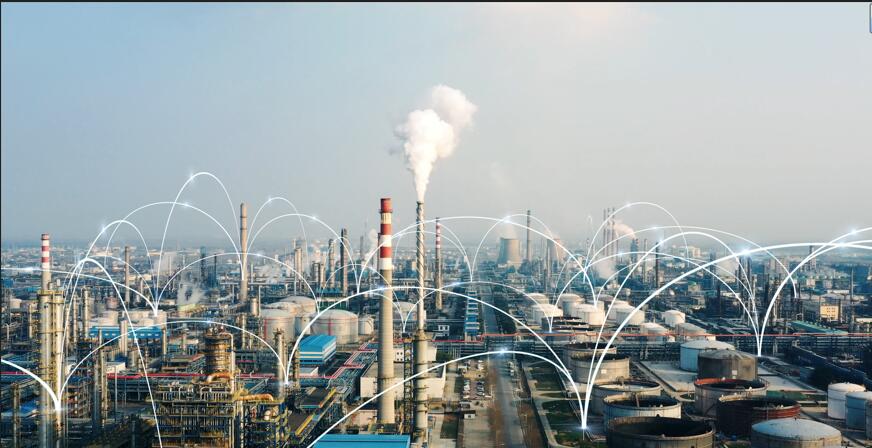
Chemical plants: IoT sensors can monitor the concentration of dangerous gases in factories, such as ammonia, hydrogen sulfide, chlorine, etc., to ensure the safety of workers and issue timely alarms.
Mining: In underground mines, IoT devices can monitor methane gas concentrations to prevent explosion accidents and report the location of miners in real time.
3. Energy production:
Oil and gas industry: IoT technology can be used to monitor gas leaks in oil and gas wells, as well as gas concentrations in pipelines. This helps improve safety, reduce losses and ensure environmental protection.
Solar and wind energy: IoT sensors can be used to monitor gas leaks in solar and wind energy equipment to maintain equipment reliability and safety.
Respiratory gas analysis: IoT sensors are used to monitor patients’ respiratory gases, including oxygen, carbon dioxide, and nitrogen, to help doctors monitor patients’ health conditions.
Operating Room: In the operating room, IoT devices can monitor the concentration of anesthetic gases and other harmful gases to ensure the safety of surgical personnel and patients.
5. Food and Beverage Industry:
Food quality monitoring: IoT technology can be used to monitor volatile organic compounds, odors and gases in food to ensure the freshness and safety of food.
Brewing industry: During the brewing process, IoT sensors can monitor the gas produced during fermentation and help brewers control the fermentation process.

6. Security and Emergency Response:
Fire detection: IoT sensors can detect smoke and harmful gases generated in fires, issue early warnings, and ensure the safe evacuation of personnel.
Chemical leaks: In an emergency, IoT devices can monitor chemical leaks, quickly sound an alarm and notify emergency response departments.
7. Scientific research:
Climate research: IoT sensor networks are used to monitor atmospheric composition and meteorological data, helping scientists study climate change and global weather systems.
Astronomy: IoT technology is used to monitor gases in astronomical telescopes to study gas clouds and interstellar matter in the universe.
Overall, the application of IoT technology in the field of gas analysis can help improve environmental quality, enhance industrial safety, enhance medical monitoring and protect food safety. These applications not only provide real-time data, but also improve data analysis and decision support systems, helping to improve efficiency and reduce risks in various fields.
Challenges and future development of the Internet of Things in gas analyzers
Although IoT has great potential in the field of gas analyzers, it also faces some challenges.Some of these challenges include data privacy and security issues, and how to manage and analyze large amounts of surveillance data.In order to solve these problems, continuous improvement of IoT technology and strengthening of data management and security measures are needed.
In addition, the development of the Internet of Things also requires more standards and specifications to ensure that various gas analyzers and sensors can interoperate and that data can be interoperable. At the same time, more professionals need to be trained to maintain and manage IoT systems.
In the future, with the continuous advancement of IoT technology, we can foresee that gas analyzers will become more intelligent and efficient. The accuracy and sensitivity of sensors will continue to improve, data analysis algorithms will become smarter, and monitoring systems will become more stable and reliable. This will help improve environmental quality, protect people’s health and promote sustainable development.
Conclusion
The application of IoT in the field of gas analyzers is changing the way we monitor gases. It makes monitoring more real-time, intelligent and efficient, and improves the level of environmental protection and personnel safety. However, the development of IoT technology still faces some challenges and requires continuous improvement and innovation. In the future, we can expect that the application of the Internet of Things in the field of gas analyzers will continue to grow and bring more convenience and safety to our lives.Welcome to contact us!



